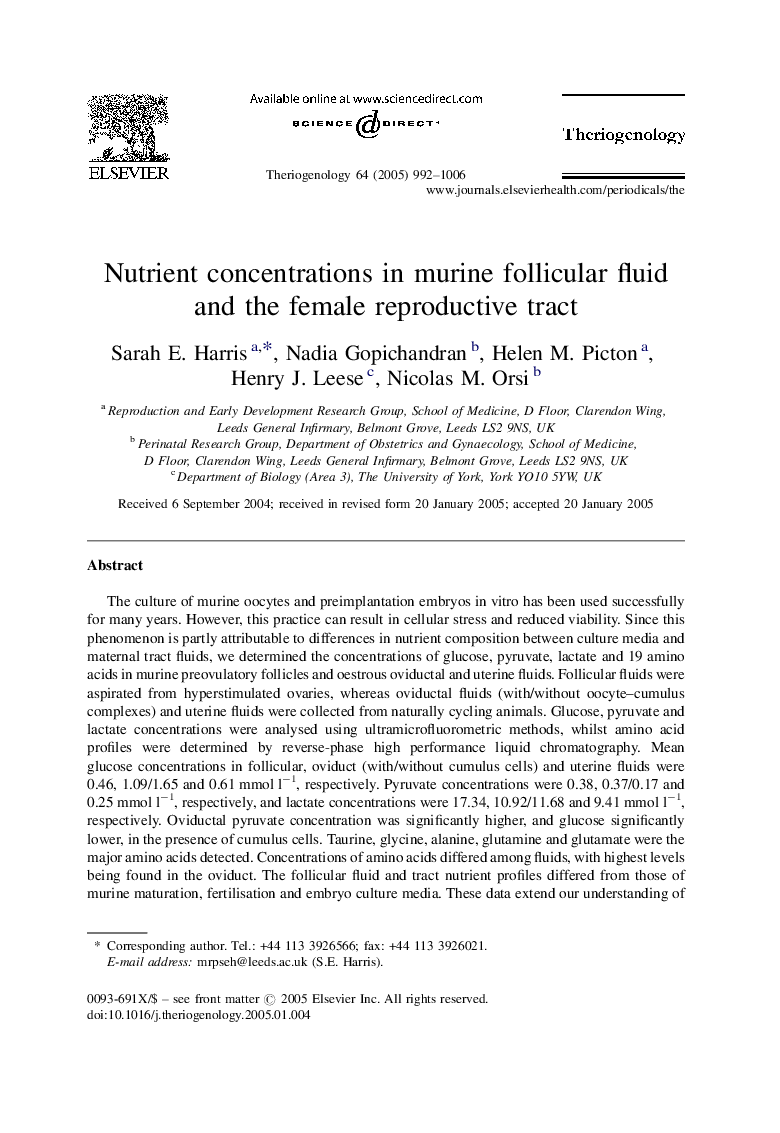| Article ID | Journal | Published Year | Pages | File Type |
|---|---|---|---|---|
| 10893505 | Theriogenology | 2005 | 15 Pages |
Abstract
The culture of murine oocytes and preimplantation embryos in vitro has been used successfully for many years. However, this practice can result in cellular stress and reduced viability. Since this phenomenon is partly attributable to differences in nutrient composition between culture media and maternal tract fluids, we determined the concentrations of glucose, pyruvate, lactate and 19 amino acids in murine preovulatory follicles and oestrous oviductal and uterine fluids. Follicular fluids were aspirated from hyperstimulated ovaries, whereas oviductal fluids (with/without oocyte-cumulus complexes) and uterine fluids were collected from naturally cycling animals. Glucose, pyruvate and lactate concentrations were analysed using ultramicrofluorometric methods, whilst amino acid profiles were determined by reverse-phase high performance liquid chromatography. Mean glucose concentrations in follicular, oviduct (with/without cumulus cells) and uterine fluids were 0.46, 1.09/1.65 and 0.61 mmol lâ1, respectively. Pyruvate concentrations were 0.38, 0.37/0.17 and 0.25 mmol lâ1, respectively, and lactate concentrations were 17.34, 10.92/11.68 and 9.41 mmol lâ1, respectively. Oviductal pyruvate concentration was significantly higher, and glucose significantly lower, in the presence of cumulus cells. Taurine, glycine, alanine, glutamine and glutamate were the major amino acids detected. Concentrations of amino acids differed among fluids, with highest levels being found in the oviduct. The follicular fluid and tract nutrient profiles differed from those of murine maturation, fertilisation and embryo culture media. These data extend our understanding of cellular metabolism and of nutritional environments of the oocyte and early embryo as they progress along the reproductive tract in vivo. These results may also contribute to the formulation of nutritionally more physiological media for mouse oocyte maturation and embryo culture.
Keywords
Related Topics
Life Sciences
Agricultural and Biological Sciences
Animal Science and Zoology
Authors
Sarah E. Harris, Nadia Gopichandran, Helen M. Picton, Henry J. Leese, Nicolas M. Orsi,
